
Napoleon is no more
To celebrate the bicentenary of the death of Napoleon, the Musée de l’Armée is proposing to examine the major themes surrounding the death of Napoleon by switching perspectives and by calling in new scientific disciplines (archaeology, medicine, chemistry) in order to complete already known historical sources.
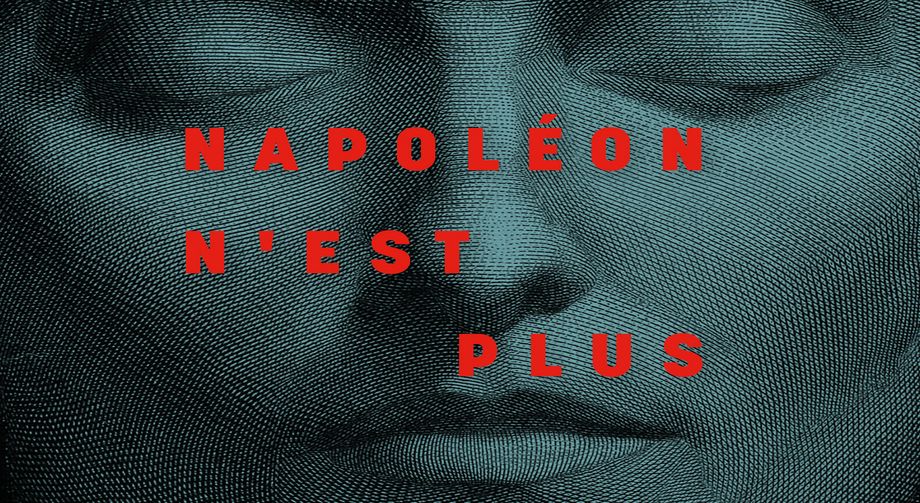
Exhibition co-organised with the Fondation Napoléon
About the exhibition
The death of Napoleon I on 5 May 1821, although it went relatively unnoticed in the eyes of the world, was extremely well documented by his companions in exile.
Despite the abundance of memories, letters, sketches, relics and stories, this history nevertheless includes grey areas, uncertainties, contradictions.
So many facts which reason has attempted to dissect, and gaps which imagination has hastened to bridge.
In this exhibition, we propose to examine the major themes surrounding the death of Napoleon by changing the perspectives.
By calling in new scientific disciplines (archaeology, medicine, chemistry) in order to complete already known historical sources and material evidence of this history, the musée de l’Armée provides visitors with all the necessary elements to enable them to conduct the investigation by themselves.
This exhibition is part of the 2021 Napoleon Season organised to celebrate the bicentenary of the Emperor’s death. The musée de l’Armée will propose a rich and varied cultural offer which will evoke the end of Napoleon’s personal adventure, while opening up to the topicality and the current reality of his legacy to the world.
Bookings
Remember to keep your ticket!
- If you have purchased a ticket for the exhibition Napoleon at La Villette (from 14 April to 19 September 2021), you are entitled to a reduced rate (€11 instead of €14) for the exhibitions Napoleon Is No More and Napoleon? Again! or to the “buy one, get one free” offer for people under the age of 26 (upon presentation of the physical or digital ticket).
- With your ticket for the exhibitions Napoleon Is No More and Napoleon? Again!, you are entitled to a reduced rate (€15 instead of €20) for the exhibition Napoleon at La Villette (from 14 April to 19 September 2021).
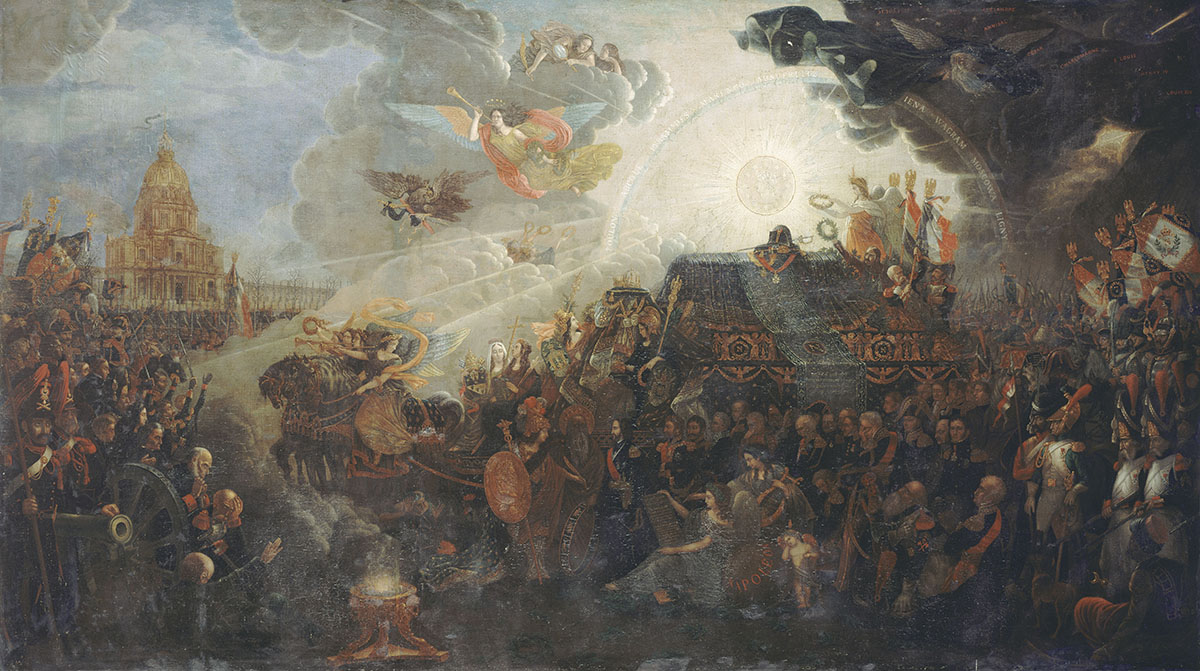
Tour of the Exhibition
Napoleon the Immortal
From Italy to the Hundred Days, Napoleon’s career was marked by exploits relayed by the press, Salon painting, engraving, and even caricature and popular song. And he himself largely orchestrated what would nowadays be known as his communication policy. New Alexander, the equal of Hannibal or rival of Charlemagne, he was compared to the greatest men in history. From hero to demigod, there was only one step, which many artists easily took.
The musée de l’Armée presents in this exhibition three exceptional works of art, two of which have almost never been see before, by François Trichot, Edmond-Louis Dupain and Louis Béroud.
Death
In May 1821, Napoleon had been a prisoner of the English in Saint Helena for over five years. Once he had given up on the idea of leaving Saint Helena alive, he started working for posterity by writing his memoirs. He became increasingly sick and suffered from persistent stomach pains caused by a severe ulcer. Year after year, he became weaker until becoming constantly bedridden from the end of 1820. During his final months, he suffered terribly, and in April 1821, those close to him understood that he was terminally ill. Napoleon died on 5 May 1821 at 5:49 in the afternoon.
In the first chronological part of the tour, the exhibition revisits the fateful moment of death. The twilight of the prisoner chained to his rock has inspired Romantic novelists and poets in many countries, who helped create the image of this legendary death, of the hero, the great man.
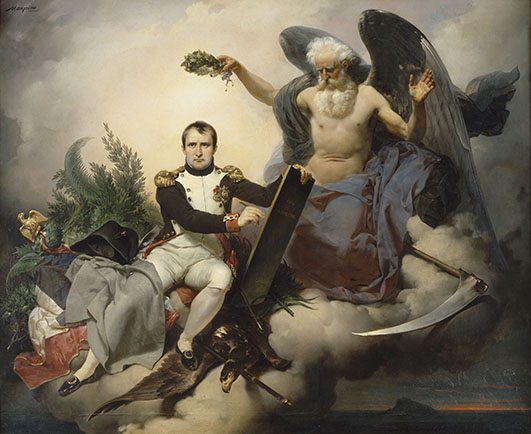
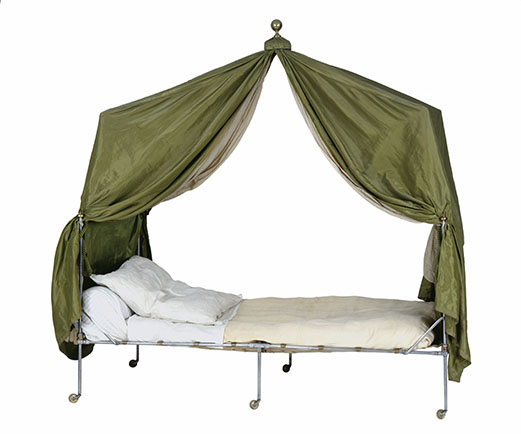
The Autopsy and Death Masks
The Emperor himself asked for an autopsy to be carried out as he feared that the illness which was consuming him may be hereditary. For the English, this autopsy had another purpose: to prove that the exile conditions were not responsible for the death of the prisoner in their custody. The autopsy was performed by Dr Antommarchi the day after his death, with the assistance of six British doctors and in the presence of the Emperor’s most loyal servants. Dr Antommarchi’s autopsy report, presented in the exhibition, describes an ulcer which slowly perforated the lining of the stomach.
For this part of the tour which marks a thematic break, the exhibition chooses to equip itself with new tools in order to seek a fresh approach to the sources.
The Wake
After his death, Napoleon’s body was washed and placed in the former study which had been converted into a chapel of rest. Laid on his campaign bed, he wore his well-known Colonel of the Imperial Guard uniform and his decorations. The servants of Longwood watched over him, according to Imperial etiquette. After a mass celebrated by Abbot Vignali, a decision was made to open the doors of Longwood to all those who wished to pay their last respects.
Without it becoming a reconstruction, the exhibition proposes an evocation of the scene by combining pieces and objects from the chapel of rest of Saint Helena.
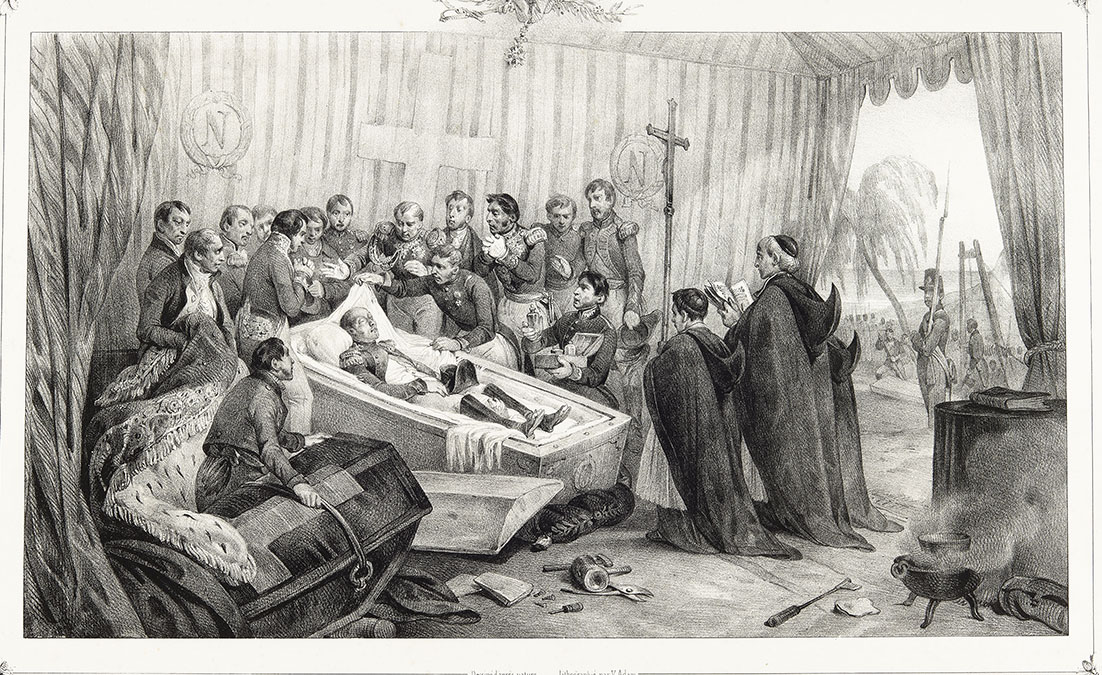
The Will
Feeling his last bit of strength leaving him, Napoleon decided to devote himself to writing his last will. The testamentary files of Napoleon I, which consist of twenty separate pieces, the writing of which took over two weeks, from 11 to 29 April 1821, has several dimensions: the legal act, both private and public, is coupled with a political perspective, and contains a psychological and intimate depth.
The presentation of this part of the exhibition is centred around the exceptional document taken out of the iron cabinet of the Archives Nationales especially for the occasion.
The Tomb of Saint Helena
From 1821 to 1840, the body of Napoleon rested in Saint Helena, at the heart of the charming Geranium Valley. The tomb, although rooted in a very distinctive geographical reality, quickly became a symbol: this solitary tomb in the countryside, surrounded by weeping willows, became a subject of representation, a romantic subject.
The exhibition’s scenography aims to show that in the absence of the body, Napoleon’s ghost discreetly joined Europe, in people’s minds and through incarnations in popular culture.
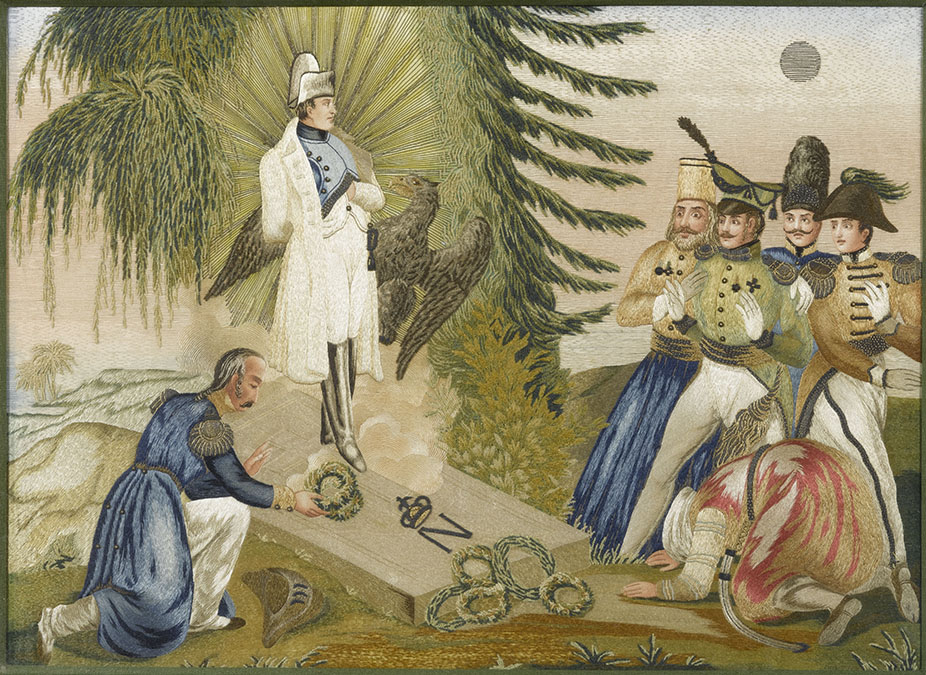
The Return of the Ashes
The return of the ashes was a highly political episode. From 1821, petitions were submitted to the Assembly to repatriate Napoleon’s body to France. They finally generated sufficient coverage in the political conditions of the reign of Louis Philippe: the expedition was approved in 1840, thanks to the support of Adolphe Thiers.
The exhibition’s scenography evokes the transfer of Napoleon’s ashes with an installation comparing the tomb of Saint Helena to the one at the Invalides, with an emphasis on the deployment rather than the transfer of the power of historical heritage.
Napoleon at the Invalides
Napoleon is a tutelary figure of the Hôtel National des Invalides, to the extent that he overshadows the figure of its illustrious founder, Louis XIV. Long before the return of his ashes and the construction of this monumental tomb, Napoleon had imposed his vision and viewpoints on the nature, the organisation and the operation of the institution of the Invalides.
In order to illustrate the transformation of the Dôme des Invalides, a multimedia device is available to help visitors understand the implications of building a new monument within an existing building.
Monumental
When the tomb was completed in 1861, Napoleon became, alongside the Dôme, a national monument. Beyond the architectural object it represents, the tomb took on a particular dimension: it is the symbol of the Emperor, of his transition to posterity and of his eternal memory.
In this final part, the exhibition brings the visitors to the place they crossed when they arrived, the place with a history to which they belong because of their presence at the site.
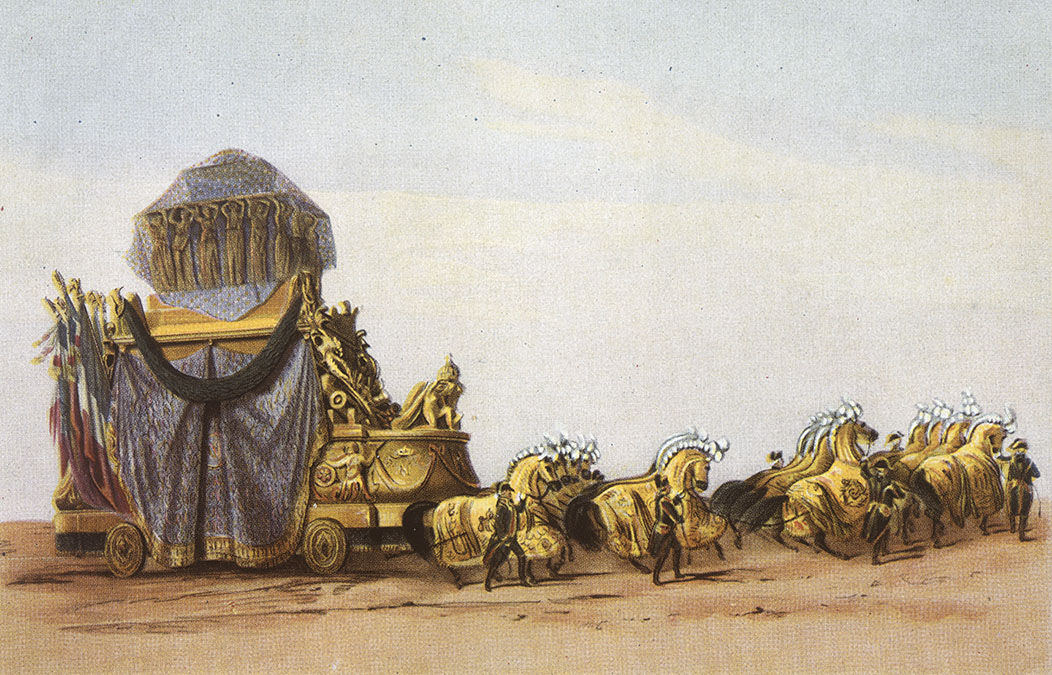
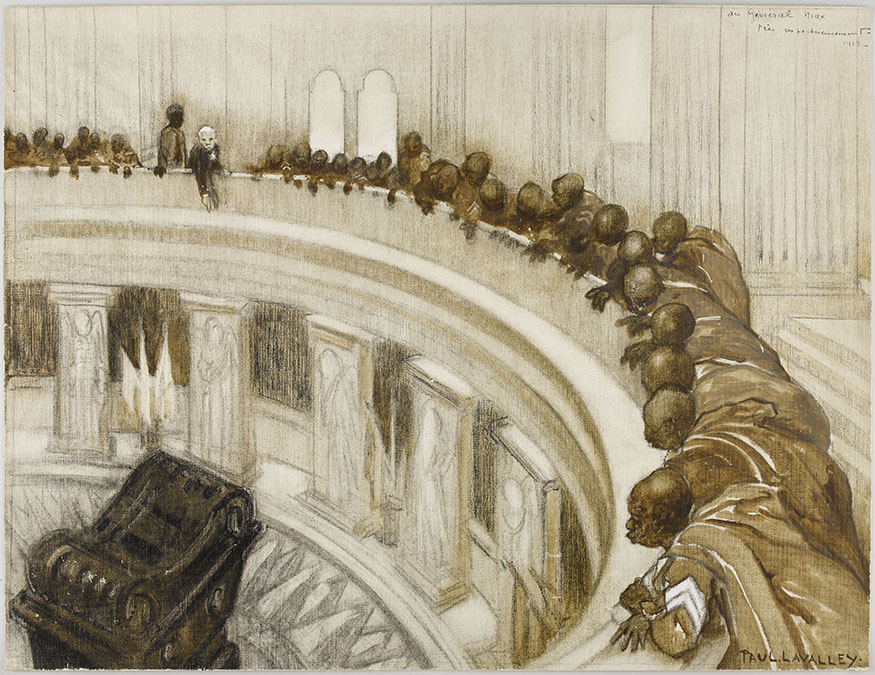
Exhibition booklet
Co-organiser:
Exhibition co-organised with the Fondation Napoléon
Patron:
CIC
Media Partners:
Le Monde, Le Point, Le Bonbon, RTL, France Télévisions
Major Lenders:
Musée National des Châteaux de Versailles et de Trianon, BNF, Musée National des Châteaux de Malmaison et de Bois-Préau